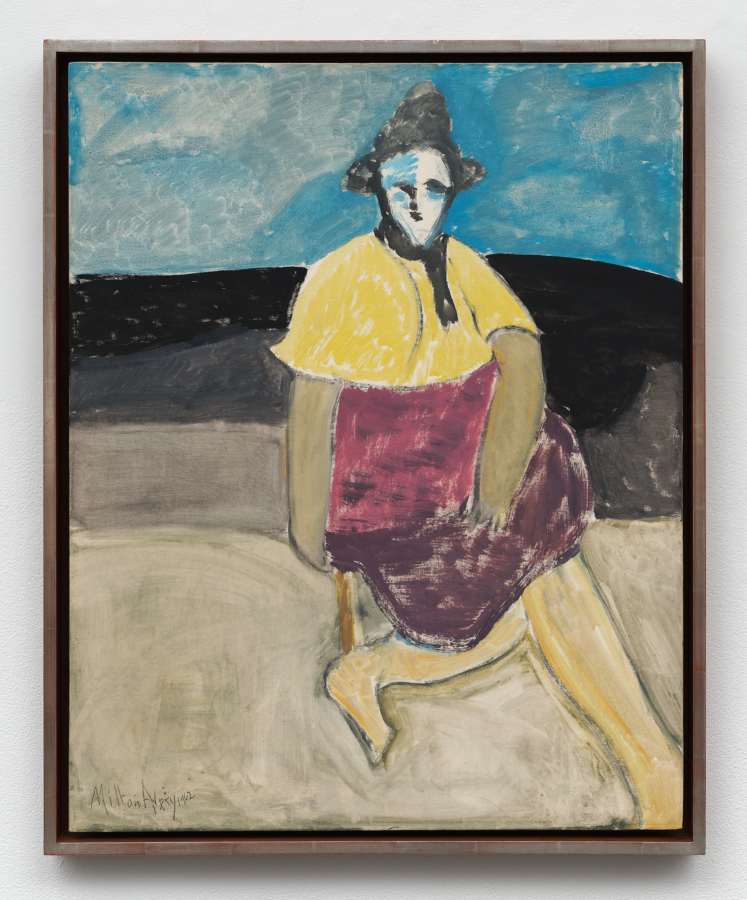July 4, 2016
Download as PDF
View on Art Critical
300 South Mission Road in Los Angeles seems a bit of an unlikely setting for Maccarone’s LA gallery. With graffiti-scarred warehouses and chain-link fence, long dusty blocks of faceless industrial buildings, and wildflower and weeds struggling at the edge of the pavement, the area seems a curious locus to find Paul Lee’s coolly introspective painted constructions.
A few short years ago there was not even the idea of having a gallery down here, much less the western outpost of an established New York dealer. Now there are several, and before you can say “demographic-shift” there will likely be dozens.
No surprise, then, when Lee presented a body of work radically different from what viewers have known, in his solo show “Layers For A Brain Corner.” The works in the show divide into two groups: four large wall drawings/sculptures, and constructions with painted tambourines affixed to shaped canvases, with their interplay of round and straight edges creating an optically vivid whole. These tambourine pieces may arguably reference the body, albeit obliquely.
In works such as Mind Mountain and Washcloth Weight (all works 2016) Lee uses a motif common to his oeuvre: bath towels, here purposed as drawing elements. Lee has excised everything but the towels’ edges, dyed them with black ink, and employed them as lines for his huge wall drawings, which he calls “negatives.” Terming these giant wall pieces “sculptures” is a stretch, though they do protrude from the wall at a towel’s thickness. Lee’s message from what he calls these “spills” and “tumbles” is clear: life is precarious, fault lines are everywhere, the center rarely holds.
Although Lee’s use of towels has previously been described as signifiers of queer culture by critics such as Holland Cotter and Robert Hobbs, the new work lives at the brink of pure abstraction. All that remains of what Cotter terms “the mechanisms of gay coding” is color; indeed, Lee’s palette is a key to his meanings, especially the wan lavenders, the cornflower yellows, the paler shades of white, off-white, dreary gray, deathly black. Lavender in particular has a long association with gay pride, one hypothesis being that it begins with masculine blue, to which is added some feminine pink. As for the evocation of corporeality, Lee told me, “The ‘skin’ of the canvas places them in a technological cultural context that is not immediately obvious. It’s a stand-in for the skin and the body. Sometimes skin is exposed, sometimes it’s hidden in color.”
In “Layers For A Brain Corner,” Lee is edging further away from the sculptural combines for which he is best known — works with bent soda cans, some imprinted with a photograph of a young man’s face, light bulbs, and string. He is moving in the direction of painting. “I was trying to narrow my parameters, so I can learn more,” he says.
“This was going to be a paintings show,” he continues, “but I wanted there to be a dialogue between these two bodies of work. I call these ‘touch paintings’ because tambourines are activated by touch. The first tambourines I made had rectangles on them, and I thought of them as being like touch screens. The touch screen is part of our daily life, you can touch an image and it can lead you to another. The image becomes a path. It’s a visual space that becomes active in a new way. I think it is a new space for painting to happen.”
The specter of the late Ellsworth Kelly hangs heavily over the work, especially in formal terms, though Lee also cites Kelly’s impact on culture. As one enters the gallery, the shaped pieces first seen seem to summon Kelly. “The things I get most from Kelly are that he took the landscape, reconfigured it, abstracted it, and made his own version of it; he made his own space,” Lee says. “I like that shadows are a source for some of his works, how he took something slight and made something glorious and celebratory of it. And I really enjoy that he was a gay artist, that his work speaks of liberation through abstraction.”
Asked about the meanings of the works’ titles, Lee admits to a somewhat random method: “I didn’t want to call them ‘Untitled’ anymore, because I didn’t want people to think they are just designs. So I’d look hard at them, and just put down whatever came into my head.” Sometimes the title lends a poetic flavor to the work, as in Very Slightly; in other cases he veers toward the literal. For example, a piece with a tambourine painted half black and half white, suggestive of a half-moon, is called Either Side Of The Night.
If Lee’s new work has roots in Kelly and in Josef Albers, its seed was planted by his mentor, Jack Pierson, and result from his encouragement. Pierson, like Kelly, has made a career of “taking something slight and making something glorious of it,” and the lesson has not been lost on Lee. Luck, and talent, and associations with influential and generous friends — having these elements is certainly as vital to an artist’s progress as their ability to draw and paint. But knowing when to shed the obvious reference points of his forbears, that is the trajectory point, the crucial moment, that not all artists attain.



